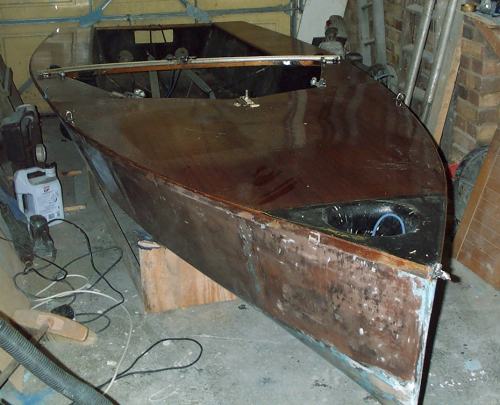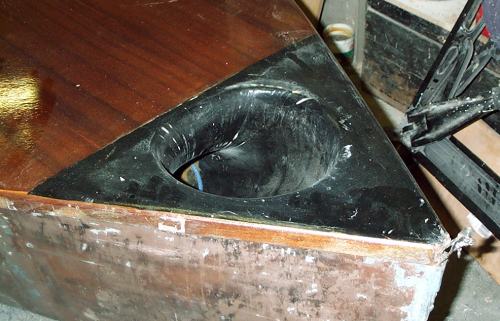


An interesting feature is the way layers of ply have been used to provide weight reduction with suitable cutouts. Its also rather decorative! The transom shows this off nicely, but its also done on the bottom skin between the chines and the first stringer, and also next to the transom where there shouldn't be any heavy footsteps.

This picture shows the general layout of the decks. The Traveller breaks up the deck line completely, and is quite different from anything seen in the U.K. I don't know if this was typical of NZ at that time or an individual feature of this boat, but the original designers drawings show conventional continuous side decks.

We could never get nice large and light spinnaker chutes like this in this country, whereas they were readily available in Australia and New Zealand. This had a big effect on the whole development of the class, because the Australian and NZ boats kept to full height bow tanks, while in the UK bow tanks were half height. By the eighties the low bow tanks were coming right back to the mainsheet position, and this led to the UK permitting self draining boats long before Australia and New Zealand. It also made it far easier to install bowsprits, and these too were adopted first in the UK.